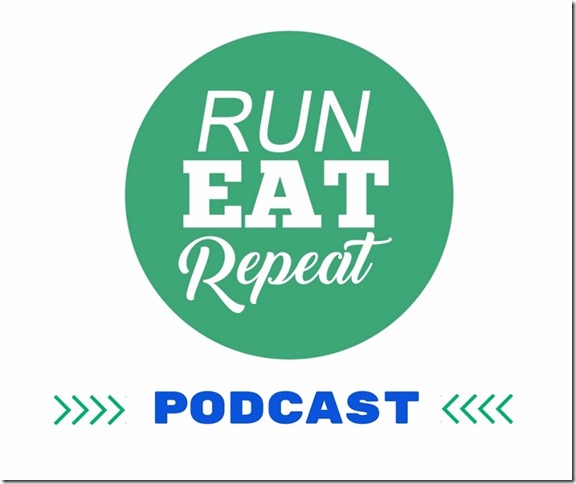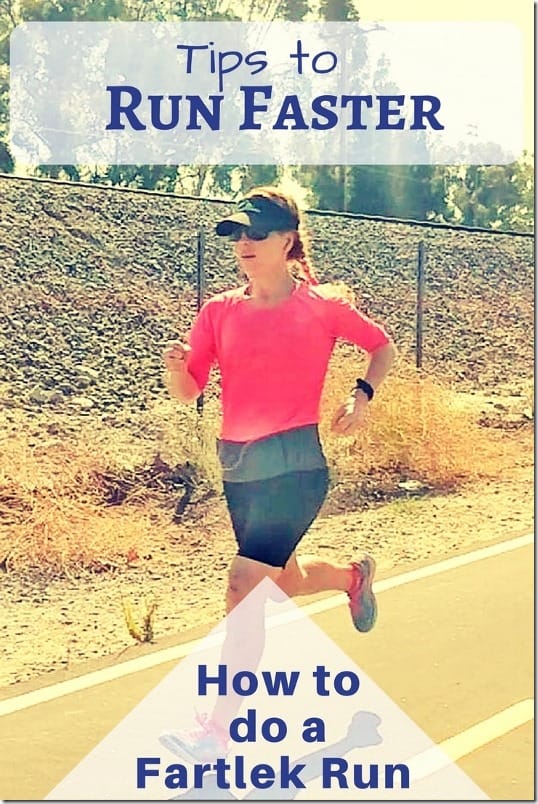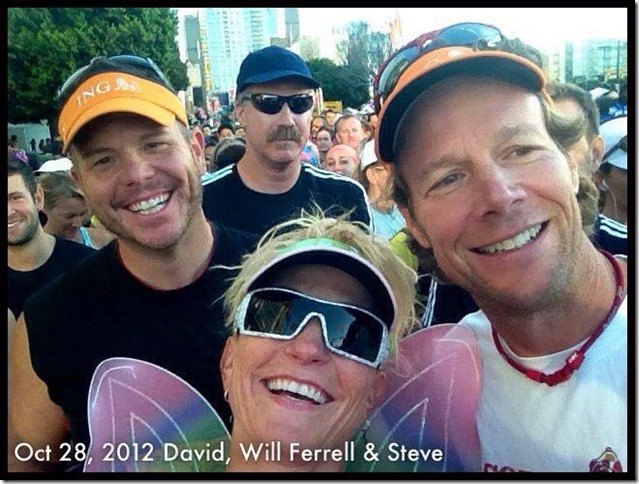Podcast: Play in new window | Download
Subscribe: RSS
It’s Fast Friday on the Run Eat Repeat podcast! Are you excited enough to fartlek?

Fartlek is Swedish for “speed play” = it’s unstructured speed work that you decide how far/fast to go in each section. Tempo and speed intervals are specific in pace and distance, but this type of speed work gives you some room to ‘play’ with.

How to do a Fartlek Run…
-> Warm-up! 5 to 10 minutes. Add in some stretching, drills or whatever you need to do to be fully warm and ready.
-> Run.. start at your usual pace for 5 minutes. Then, speed up for a bit. It can be for 1 minute, it can be for 50 meters, it can be to a mailbox or certain landmark up ahead.
-> Then, go back to your previous slower pace to recover. When you’re fully recovered – repeat.
-> Do the a few times the first day. See how you feel in terms of speed and distance. And note how you feel the next day too. *This is a good time to keep a running log or some sort of notes on your training.
Give yourself time to adjust and give your body time to recover. Then, you can try it again next week. You can make the speed section longer or add in an extra one if you feel like your body is ready.
Base-Phase Fartlek
As you begin your fall base training, be certain to plan some fartlek work into each of your training weeks. These workouts can be as simple as some very subtle gear changes during the course of 1 to 2 runs as you slowly build your volume. If you have never done any fartlek work here is a more specific workout taken from one of America’s running coach Bill Squires:
- During your longest run of the week, run a 1:00 surge every 6 or 7 minutes. This surge is not terribly hard—perhaps only 15 to 20 seconds per mile faster than your normal long-run pace.
- At the end of the 1:00 surge, simply return to your relaxed rhythm. If you have a hard time returning to “norm”
But it’s up to you – since the word means ‘speed play’ you should have fun with it! It’s playing!!
Oh!! I found the picture I mentioned in Tuesday’s podcast!! This is the picture of my running buddies Dave and Steve with Will Ferrell at the Rock N Roll Los Angeles Half Marathon!
If you missed Tuesday’s episode on my biggest race regret – check it out here.

*Please subscribe to the Run Eat Repeat podcast in your podcast app. And I would really appreciate it if you rated it (preferably with 1 brazillion stars) on iTunes and Stitcher. Thank you!!
Fartlek seems to be consistent with HIIT.
Whether exercise promotes significant weight loss depends on the kind of exercise.
As pointed out by Brad Lemley, the science shows that high-intensity interval training (HITT) is the best by far for burning fat.
A University of Virginia study (Effect of exercise training intensity on abdominal visceral fat and body composition.” National Institute of Health. Web.) tested volunteers in three groups:
One sat on its collective duff the entire time. The second long, slow aerobic exercise. And the third performed more intense exercise with a shorter duration; it was the only group that managed to burn away significant amounts of belly fat.
Another interesting result: The metabolic rate of the low-intensity exercisers actually went down during the study. The more intense exercisers achieved faster metabolisms.
But as one researcher put it, you must commit to spending most of that brief high-exertion interval at an “8 or above” on a 1–10 intensity scale. (On the other hand, you’ll need to spend much less time exercising.)
This sort of exercise is known as high-intensity interval training, or HIIT. It has long been known to serious athletes but is now finally entering the mainstream.
The same research group that did the study above found in another that HIIT burned fat more efficiently than did typical aerobics. They tracked two groups. One performed 20 weeks of conventional aerobics, and the other did 15 weeks of HIIT.
The first group burned more calories per workout session, but the second group incinerated an astounding 900% more fat.
So why isn’t this form of fitness more popular?
Other than the requisite ass-busting (this really does need to be emphasized), many people are turned off because they’ve been lulled into chasing something called the “fat-burning zone” when they exercise.
Perhaps you’ve seen this seductive term on a poster near the treadmills at the gym. The poster may also feature a fancy-colored graph marking off certain percentages of maximum heart rate. The idea is simple, but, rather misleading: “Keep your heart rate, and intensity, within 55–65% of maximum and you’ll burn fat at maximum efficiency during your workout.”
Actually, it’s higher-intensity workouts that boost the release of human growth hormone (HGH), which acts like a youth serum in your body, firming muscles, tightening skin, increasing energy, improving sleep . . . and carving away fat. Low-intensity exercise causes little or no release of HGH.
This was confirmed by Dr. Christopher Scott, at the University of Southern Maine “Afterburn Effect: Burn 500+ Calories from 10 Minutes of Exercise?” Built Lean. Web.). He examined the differences between steady cycling and 15-minute sprints and found the sprinters burned 95% of their calories after the exercise was over. Bottom line: Slashing the time and pumping up the intensity can give you dramatically better exercise results.
You can access Lemley’s book, Freedom from Fat, in the DropBox on my website, http://www.realfood4healthandweightloss.com .
Robert K. Walker
I love fartleks, they’re so much less intimidating than formal interval training!
Working on speed can be a challenge for a run-walker like me. I’m just starting to play with my intervals. I have subscribed to your podcast and I am listening to it on my daily commute to work! Have you ever done specific intervals that improved your time in a race?
Sounds interesting! The name without knowing the context, though, haha!
Charmaine Ng | Architecture & Lifestyle Blog
http://charmainenyw.com